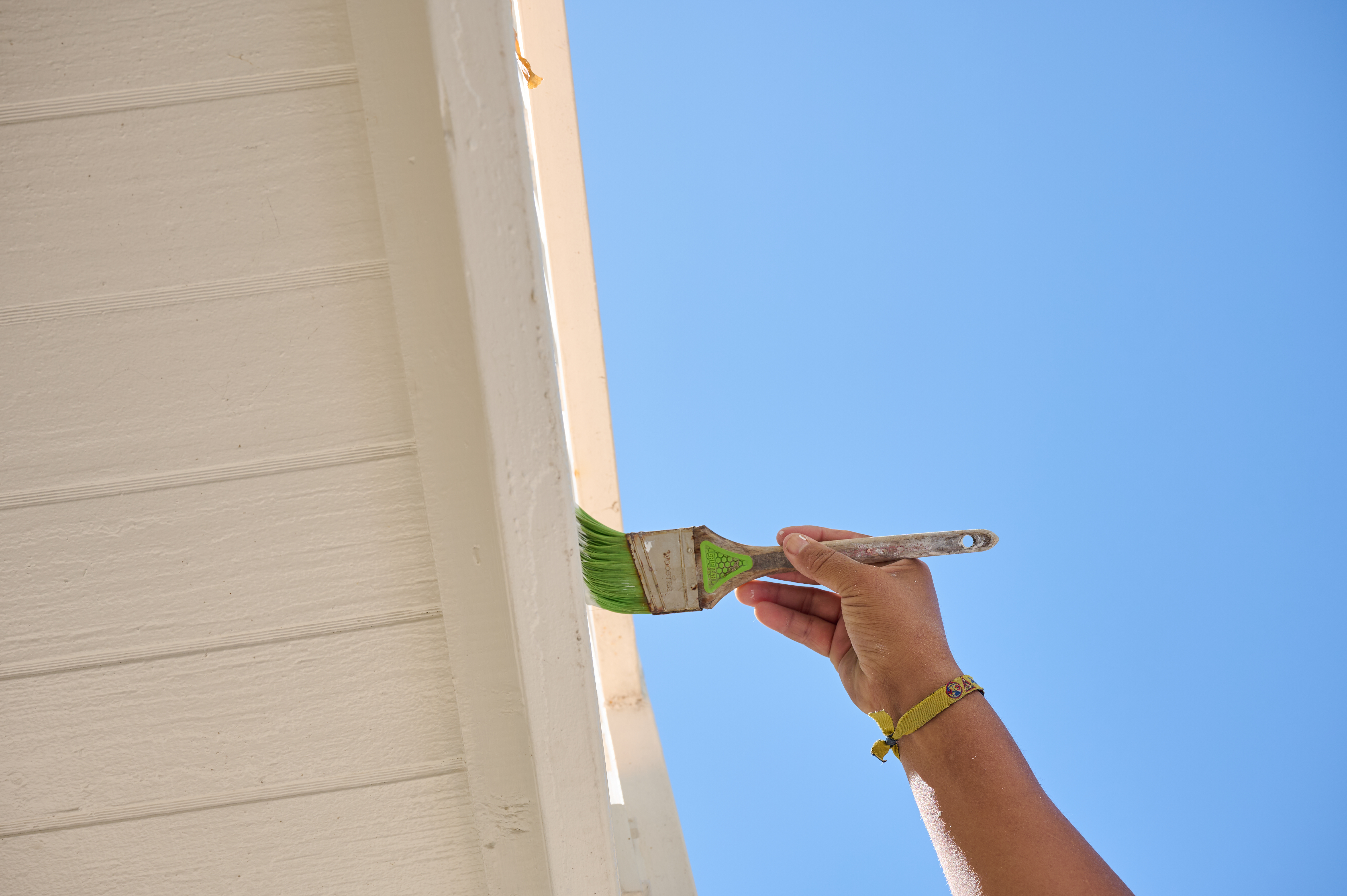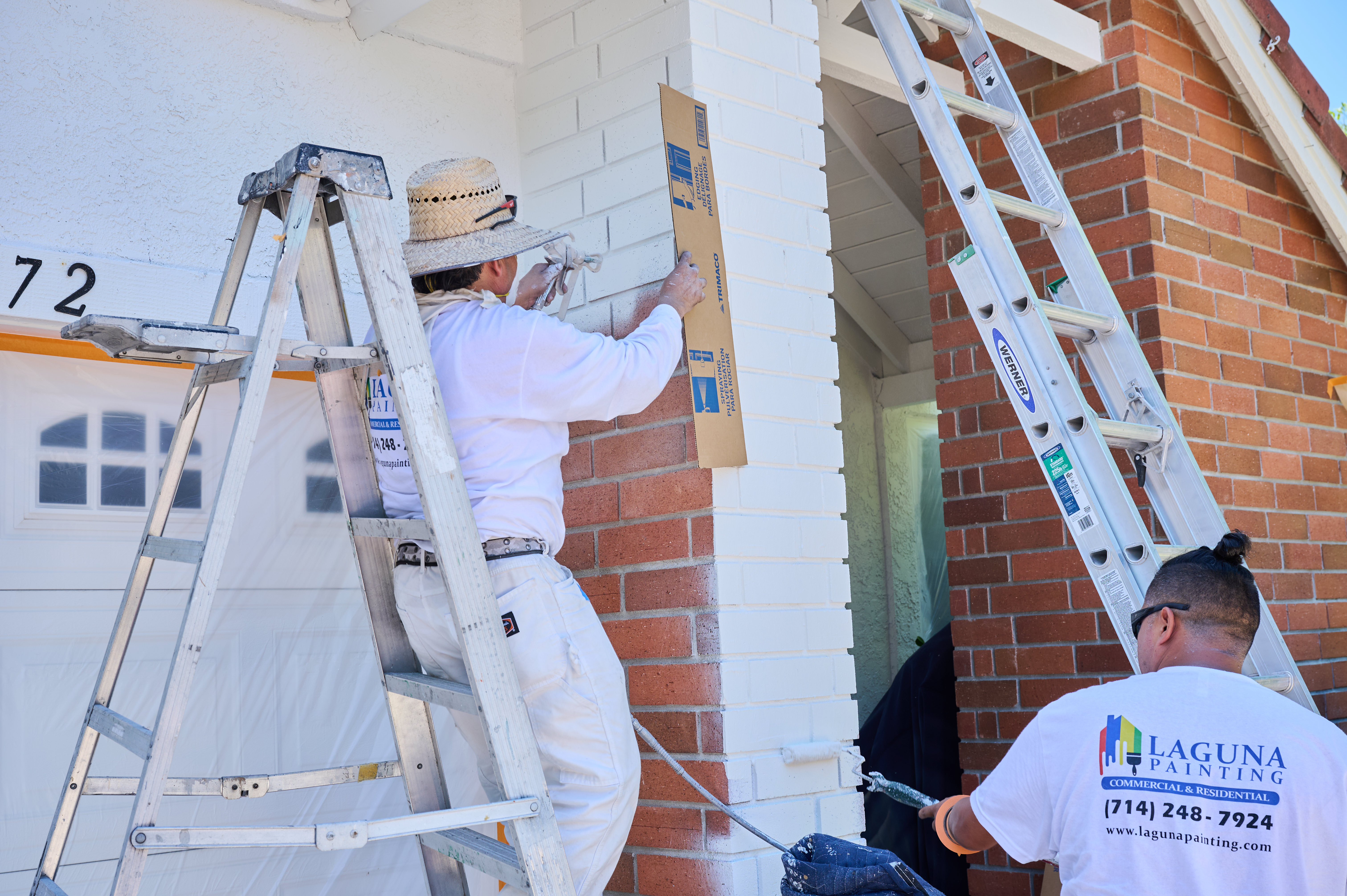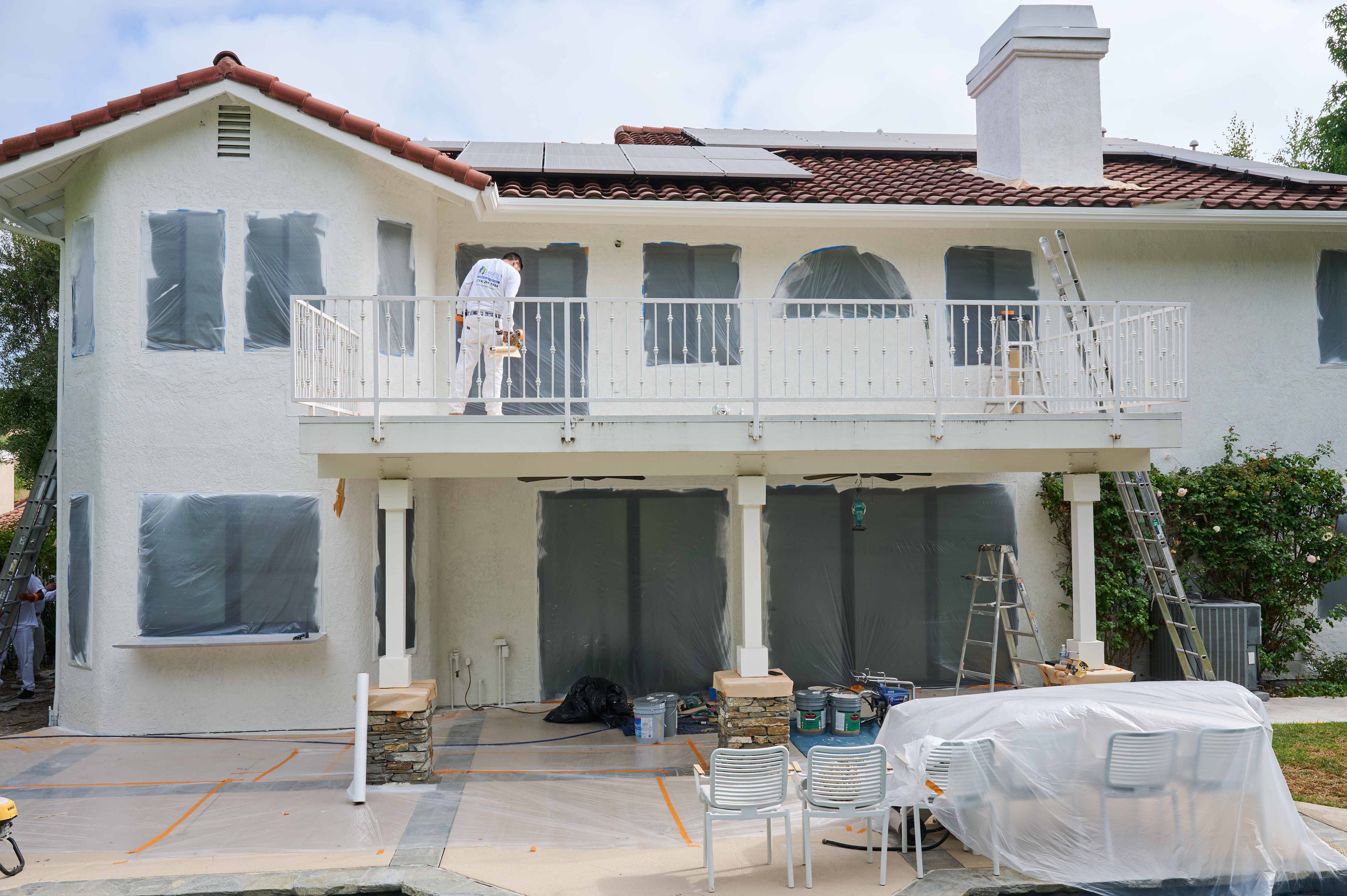
Painting your gutters can give your home the fresh finishing touch it needs to look its best. This guide walks you through the cost to paint gutters.
Step zero: remind yourself that patience is a virtue


Deciding whether to replace or repair your driveway can be a stressful decision, especially considering a new concrete driveway can cost as much as $7,400. While it's a steep investment, there is something to be said for having a smooth, attractive driveway that's free of debris, stains, cracks, and holes.
But maybe you don't have to start from scratch. Instead of a total redo, learn how to paint an old driveway to make it look as sleek as a new one would. The job's time-consuming, but not all that hard, so long as you don't mind waiting around for things to dry.
For at least the next few days, you'll need to find somewhere to park your vehicle(s). If street parking isn't an option where you live, ask friends or family for a temporary spot. You'll be unable to park in your driveway during the duration of the project.
Use a broom to remove rocks, pebbles, leaves, dirt, and any other debris you find on your driveway. Be diligent with this part of the project; it's the first step to make sure your driveway's paint job looks smooth and neat.

To really wash away the grime, use a pressure washer to get rid of bacteria, weeds, chalk marks, and other difficult driveway stains. Cleaning your driveway is about half the job of painting it, so be thorough. Let the surface dry before you continue.
There are pros and cons when deciding whether to rent or hire a pressure washer. In this case, it might be best to just rent or borrow one since you're just washing your driveway.
Mix 1/4 cup trisodium phosphate cleaning agent (or another driveway-safe alternative) for every 1 gallon of water. You can find these products at outdoor stores for $10 to $20.
Using a brush, apply the degreaser to stains on your driveway then scrub the affected area. You may have to go over it more than once. Wear latex gloves to prevent getting the agent on your skin.
Degreasing agents won't do much good for spray paint removal. A squirt of soap and water or a spray paint removing agent are your best bets.
By now, you've likely sussed out any major holes and cracks on your driveway. Now's a good time to fill them! You can buy an outdoor driveway caulking agent tube for around $10 at home improvement stores.
Each caulk product is different, so read the directions before you start. Some quick-dry formulas dry in as little as 30 minutes, while others may need a whole day to solidify. No matter what you use, wait for the caulk to dry completely before you begin painting.
Most of the driveway paints you'll find at home improvement stores aren't actually paint at all—they're usually an epoxy paint, which is a latex acrylic product. Due to its strength, epoxy works especially well on floored surfaces.
A gallon of epoxy costs around $35 on the low end, but could cost up to $100 for different colors or higher durability ratings.
Once more you'll want to carefully read labels and directions. Some epoxies come premixed, while others you'll need to mix with water. Take note of dry times and other pertinent details.

Work around the perimeter of your driveway with a smaller, handheld brush. Add epoxy paint to all the edges first. Paint a 6-inch "barrier," so to speak, before working your way in towards the center. Once you've painted the perimeter, switch to the big roller and paint the rest of your driveway.
If plants surround the immediate edge of your driveway, you may want to cover them with plastic or create a tape barrier between where you're painting. Paint of any kind can kill plants if it seeps into the ground in large doses.
Most epoxy coatings for driveways take 24 to 48 hours to dry. After everything’s dry, assess your driveway. Does it look new and sleek, or could it benefit from another coat?
If needed, repeat step six. Painting an old driveway to make it look new is definitely time-intensive, but a lot of that is just waiting around for stuff to dry. Be patient and rejoice in the fact that your driveway's about to look brand spanking new again!
After you're done you might consider sealing your driveway. Ask a local driveway sealing professional for a quote or information about getting started with your project.
DIY painting allows you to save money on labor costs. It can also provide a sense of pride. However, it is essential to be knowledgeable about every step in the process as this job demands meticulous preparation, understanding of suitable materials, and precision in application. Remember, a poorly executed job can lead to uneven coatings, peeling paint, and an unsightly finish.
On the other hand, hiring a professional painter near you ensures expertise and high-quality results. Professionals possess the necessary skills, tools, and experience to prepare the surface correctly, select the suitable paints, and execute the project efficiently. Additionally, pros often provide warranties so you can feel secure about your painted driveway's long-term durability and appearance. Ultimately, weighing the cost savings against the potential risks and considering your abilities before deciding is essential.
The DIY cost for driveway painting falls between $100 and $500, with the exact figure contingent upon the specific materials and supplies required.
If you opt for professional driveway painting, you can expect to pay hourly rates ranging from $30 to $60, depending on the condition of the surface. Any necessary repair work before painting would be an additional expense. Additionally, you should factor in the cost of concrete paint and other supplies, which can accumulate to an extra $400.
Comparatively, when considering the expense of driveway resurfacing, which ranges between $1,000 and $5,000, painting emerges as a more budget-friendly option, whether you DIY or hire a pro, if your driveway only requires a refresh and not extensive repairs.
Ben Kissam contributed to this article.
I am highly satisfied with the window replacement service I received; the professionals from Savvy Exteriors were punctual and did an amazing job that exceeded my expectations.
Our homes curb appeal skyrocketed thanks to Custom Paint Jobs LLC s exterior painting.
Mike and his partner did a great job. I am very particular and I am pleased with the quality of the painting and craftmanship they exhibited. Having an older home it takes a certain touch to really make it work and that is exactly what I got. Scheduling was simple and Mike was able to work...
MARK WAS VERY HELPFUL IN THE QUOTING PROCESS. ALTHOUGH, THEY DID NOT COMPLETE THE JOB PER THE QUOTE. FAILED TO PAINT PER THE QUOTE. HOWEVER THE CONTRACTOR DID DO SOME EXTRA WIRING NOT IN THE QUOTE TO COMPENSATE.
From average costs to expert advice, get all the answers you need to get your job done.

Painting your gutters can give your home the fresh finishing touch it needs to look its best. This guide walks you through the cost to paint gutters.

The cost of materials and labor all factor into your overall brick staining cost, but what other factors impact the bottom line? Our guide covers this and more.

Painting a brick house typically costs between $1.40 and $4.20 per square foot. Your total cost will depend on where you live and the finish you use.
Painting or staining wood surfaces can give your home an entirely different look. If you aren’t sure which way to go, use this guide to decide which one is best for your next project.

What’s the difference between interior and exterior paint? Knowing how they vary is key to understanding why you should never substitute one for the other.

The best time to paint a home’s exterior depends on where you live. Read this to learn more about when to paint your house.